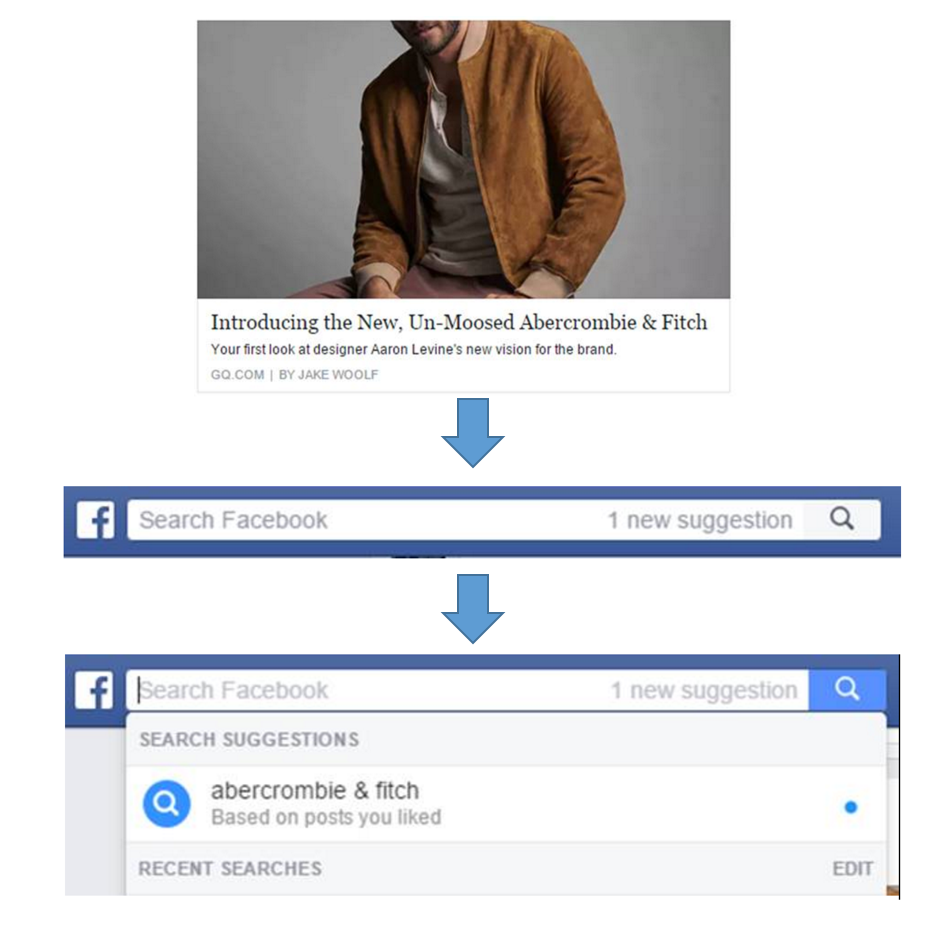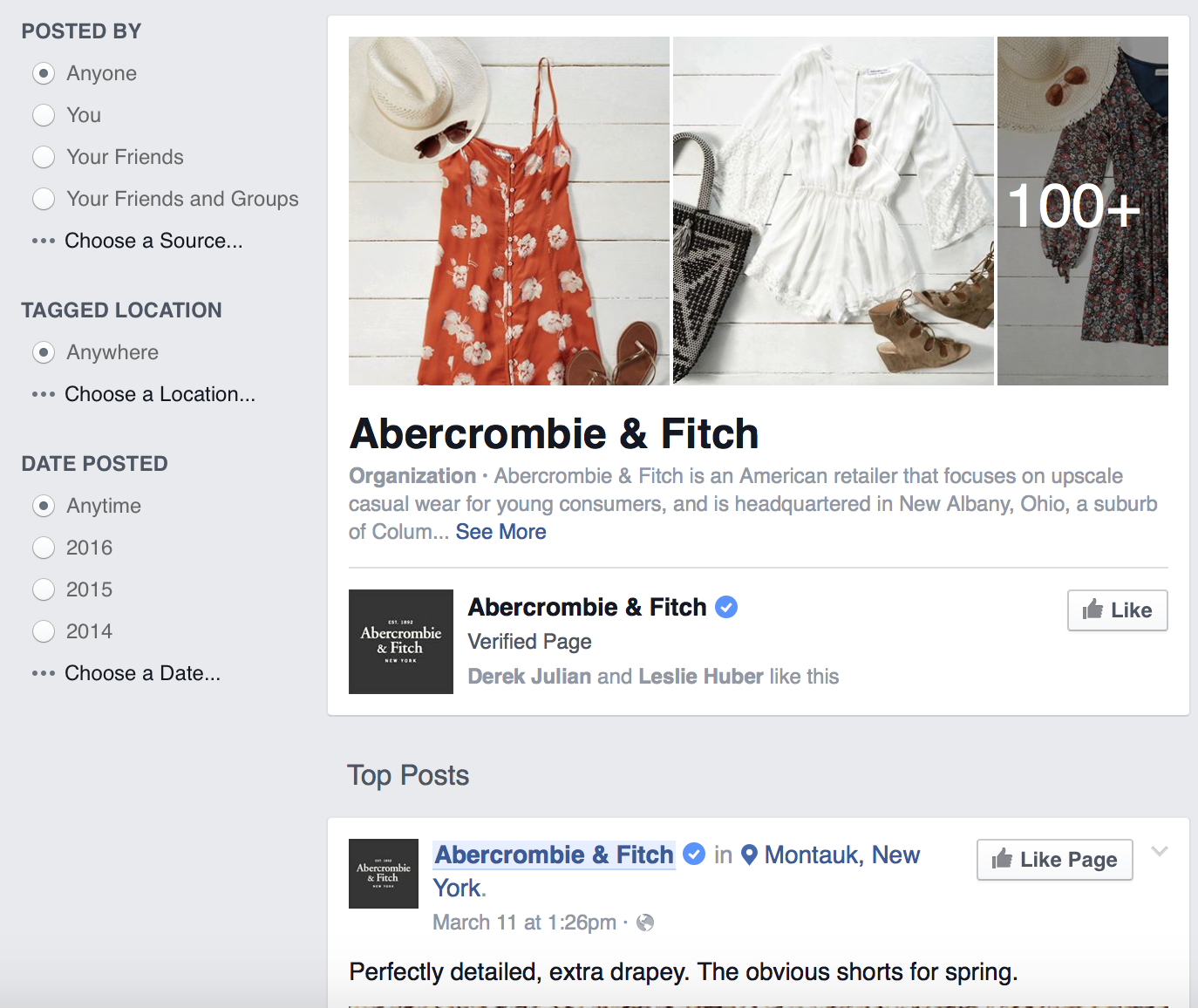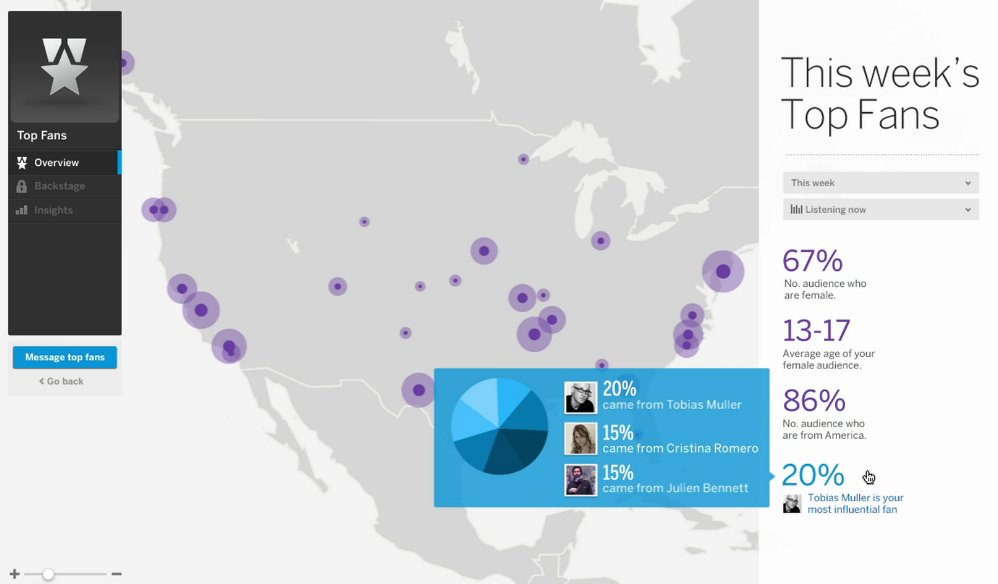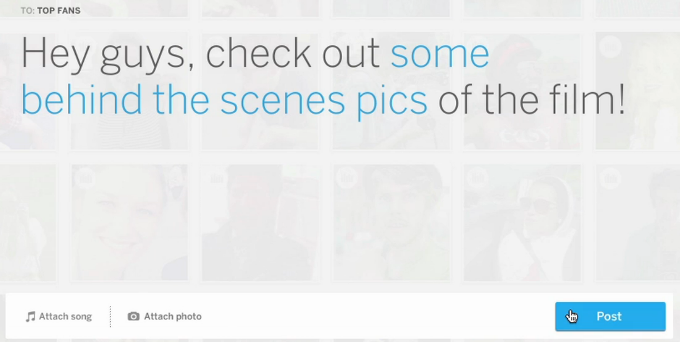So perhaps this is a little less relevant with Mitt Romney now essentially the winner of the Republican leadership race but in accumulating the data (all 669 posts for February and March) there were some interesting findings that I felt were worth writing down. So here goes part 2 of my GOP Facebook analysis.
In this analysis I looked at only per post engagement counts and the content of the post. I didn’t take into account the size of the respective fan bases in evening out engagement as a rate (that may come later…).
To analyse basics we’ll have to look at what content came out on top. Looking at the top 10 posts out of the data set it broke out as follows: 5 posts from Ron Paul, 3 from Mitt Romney and 2 from Newt Gingrich. I suspect that a small fan base and high posting frequency were reasons why Rick Santorum fell off this list.
What was the highest scoring piece of content overall? Well it wasn’t hard hitting political rhetoric or an announcement of a big win. It was something that showed a softer side of the candidate that the general public general doesn’t see.

My initial count had this post at more than 80K engagements ( likes,comments, shares) and the highest of each individual engagement category. Interesting enough anniversary content also rounded out the top three posts with #2 announcing the anniversary of Mitt Romney and #3 as a follow up post to Ron Paul’s picture. Looking through the remainder of this content I think candidates missed an opportunity to differentiate themselves as more of a person rather than an icon. This may have opened up more people to their messaging.
There were also some interesting findings on a per candidate level that I felt were useful enough to share:
Mitt Romney: The common thinking among those who want to use edge rank for the highest reach in achieving the highest post reach is to use photo content as it generally receives more engagement. Well looking at Mitt Romney’s content that may not be the case in all situations. In looking at Mitt Romney’s top 20 posts only three of these were photo content. Instead fans of this page were most affected by brief but resonating status posts positioning Mitt Romney as someone with strong leadership skills.
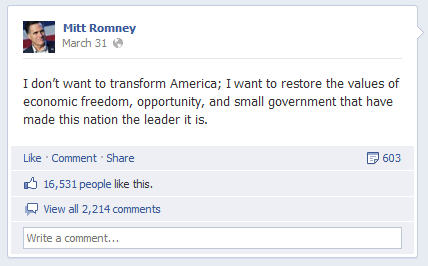
Ron Paul: Outside of his 1st spot post it was interesting to see Ron Paul’s tone. Out of the 4 candidates the tone of this page was much more first person like the candidate was writing it rather than someone on his campaign. In terms of data trends it looked like “Like” and “share” engagements were more common with “comment” engagements occurring less often. Perhaps some conversational content would have been useful to spur on response and increase post engagement.
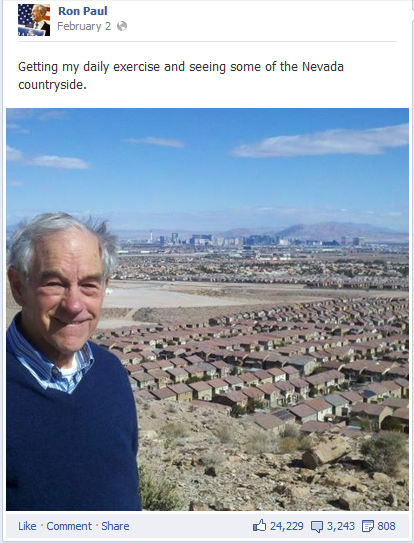
Newt Gingrich: Out of all of the candidates Newt Gingrich made the most use out of photo content including vivid imagry and strong messaging within the photo itself. Placed along with strong calls to action such as “ Can we get 5,000 likes for an UNHAPPY Obamacare birthday?” Newt Gingrich was able to boost his engagement despite having a comparably small fan base (296K vs 925K for Ron paul and 1.5 million + for Mitt Romney).
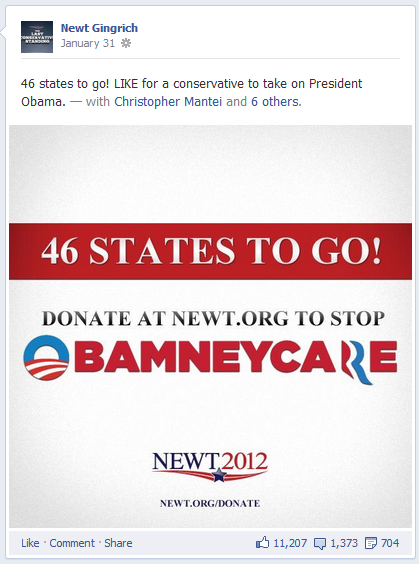
Rick Santorum: Ignoring the data itself the sheer amount of posting was what really surprised me about the Rick Santorum page. Of a total of 669 posts recorded, the Rick Santorum page came in with 316 (47%) posts. To put this on a per day perspective that’s approximately 5 posts a day. In looking at this data on a by fan base perspective it will be important to see whether what seems to be over posting had an effect on engagement or not.
Looking at the data, Rick Santorum did not seem to be in the running when it came to the volume of engagements his posts received. Looking down the list his first post doesn’t register until 107th position. Arguably he did have the smallest fan base ( 188K) but it’s still interesting to see that none of his content particularly stood out especially as there seemed to be so much effort put towards it.
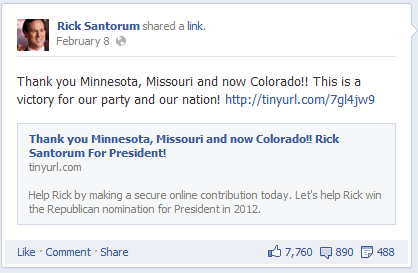
Part 2 of this set of posts looked at the bulk count of metrics but didn’t take into account the relative fan bases and only touched upon the different content variables such as content type. In the next post I hope to dig a bit deeper in seeing where the Candidates stood in terms of how engaged their fans were and who in the end of it all was most engaging. Stay Tuned!
ADDITIONALLY: As the data I used turned out to be a giant data set I’m hoping to make it accessible for download via a Google doc for any interested party to check it out. Once I’ve added fan base estimates and I’ve cleaned up the set I hope to have this going.
